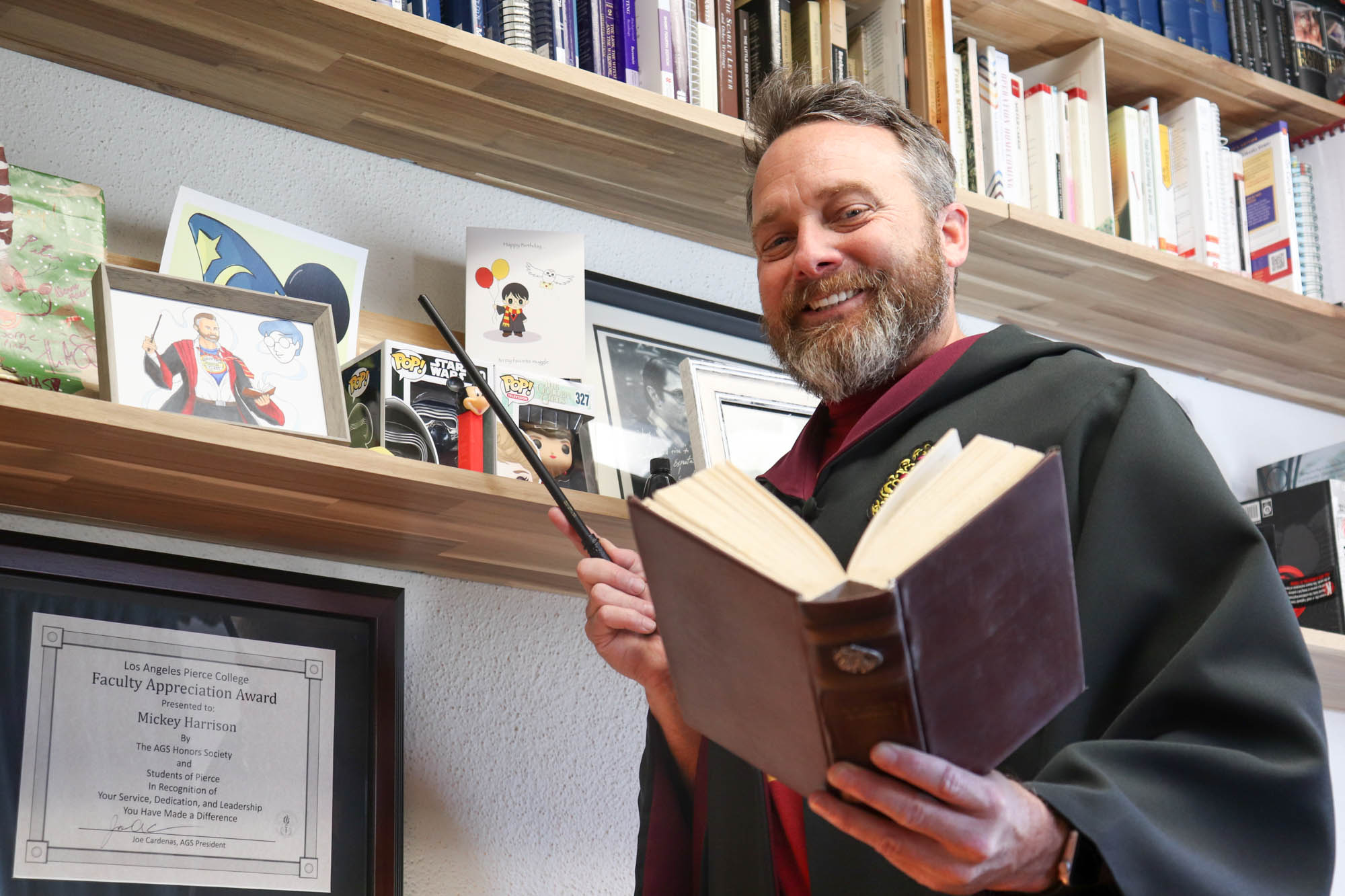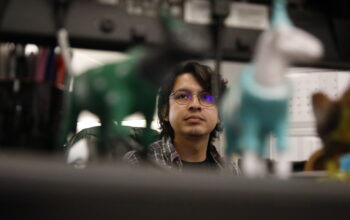As a child, the Calvin and Hobbes newspaper comic strip and cereal were a morning staple in English professor Mickey Harrison’s home.
Harrison’s Graphic Fiction is the first class of its kind to be taught at LACCD, and he made it transferable to both UC and CAL State for IGETC.
“Universities and colleges are stuck in this archaic idea that the only way to teach English is by continuing to teach classics,” Harrison said. “I’m not saying there’s no value in them, but I don’t think that’s the end all be all. I think there needs to be options for students.”
Harrison said there are a few misconceptions about graphic literature and feels they should be presented as a way for students to learn.
“I think people get confused with the medium of comics,” Harrison said. “Just because they’re images drawn on a paper doesn’t mean they don’t merit legitimate and academic study.”
Harrison said through the 1930’s and 1960’s, comics were mostly about superheroes that were printed on cheap paper which made it hard for people to take it seriously academically and should only be read for pleasure.
“It was labeled into that cheap medium for a long time and it’s only now clawing its way out of that to realize there’s true academic literature to be studied in comics,” Harrison said. “What is not graphic literature is traditional print media/traditional books of literature.”
Harrison attended UCLA for his undergrad and his teaching career started in 2013 when he worked in El Camino College in Torrance. He then started teaching at Pierce College in 2014.
According to Harrison, Elizabethan literature was his main concentration. He also said he didn’t have any background as a graphic novel expert, but grew up reading comics.
For his graphic literature course, Harrison said the best way to present his syllabus was in a comic book format.
The first book Harrison had his class read was “The Arrival” by Shaun Tan, which had only pictures.
“We must learn to read visually, to not just read words,” Harrison said. “It’s a great lesson for students to have to take their time and understand what is trying to be conveyed through visual rhetoric and have visual literacy for us to realize that we need to slow down a little bit too.”
As this class is fairly new, the greatest challenges in orchestrating a new course amidst COVID for Harrison was the “no sense of community the way we would have it normally.”
“If I was on campus, I’d be putting up flyers everywhere, I’d be going to classes and talking to people,” Harrison said. “There’s no way to reach students the way that I do in person and so because of that the class has 15 people in it and that is kind of upsetting to me.”
Pierce student Todd Barnes said he took what he learned from Harrison’s Harry Potter class and had an open mind with the graphic literature class.
“I began to see this art form with comics and how they were able to take words and pictures,” Barnes said. “To take the 5 senses from visual to smell and be able to use art to connect with you emotionally and get an emotional catharsis out of you”
Barnes said that when he began to see things non-verbally and only from a picture standpoint, he was able to connect and feel as if he was going into a different culture.
“Taking the class has given me an appreciation with art that I had ignored since I was a kid,” Barnes said. “I was able to use it at my work with creativity and apply it to my task at work where I’m able to produce more than others.”
Barnes said it would be nice to take the class again with other artists.
“Graphic literature is a great class for artists to build their skills and partner with other people,” Barnes said.
Pierce student Renee Asanas said she’s taken many of her English classes with Harrison.
“Taking this graphic literature class opened up eyes to start reading more graphic literature,” Asanas said. “During the semester of the class, I found an app called Webtoon where readers could read graphic literature written by other writers from all over the world and create and publish their own graphic novels.”
Asanas said taking Harrison’s Graphic Literature class has impacted her perspective in reading more graphic novels.
“I even started reading manga, thanks to my brother who used to work in a comic bookstore,” Asanas said. “It is hard for me to start reading graphic novels because I am picky when it comes to the type. I won’t read a novel because a friend suggested it to me. I’ll read a novel if the storyline interests me.”
Asanas said she enjoyed the energy in the classroom and the class taught her to “not judge a book by its cover.”
“The class put me in a great mood in the morning and it gave me a nice start to my day,” Asanas said. “Whether it was Professor Harrison playing some music or joking around with him or other students.“
Harrison said when students read things that they’re interested in, the class teaches itself.
“When you teach things students want to read, they become the teachers,” Harrison said.




